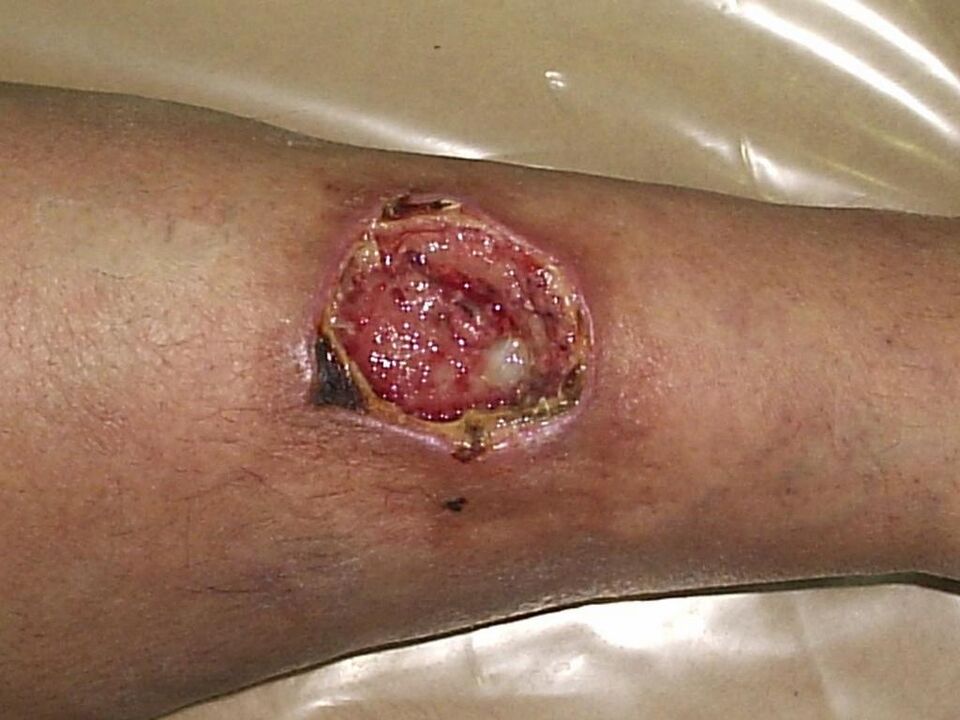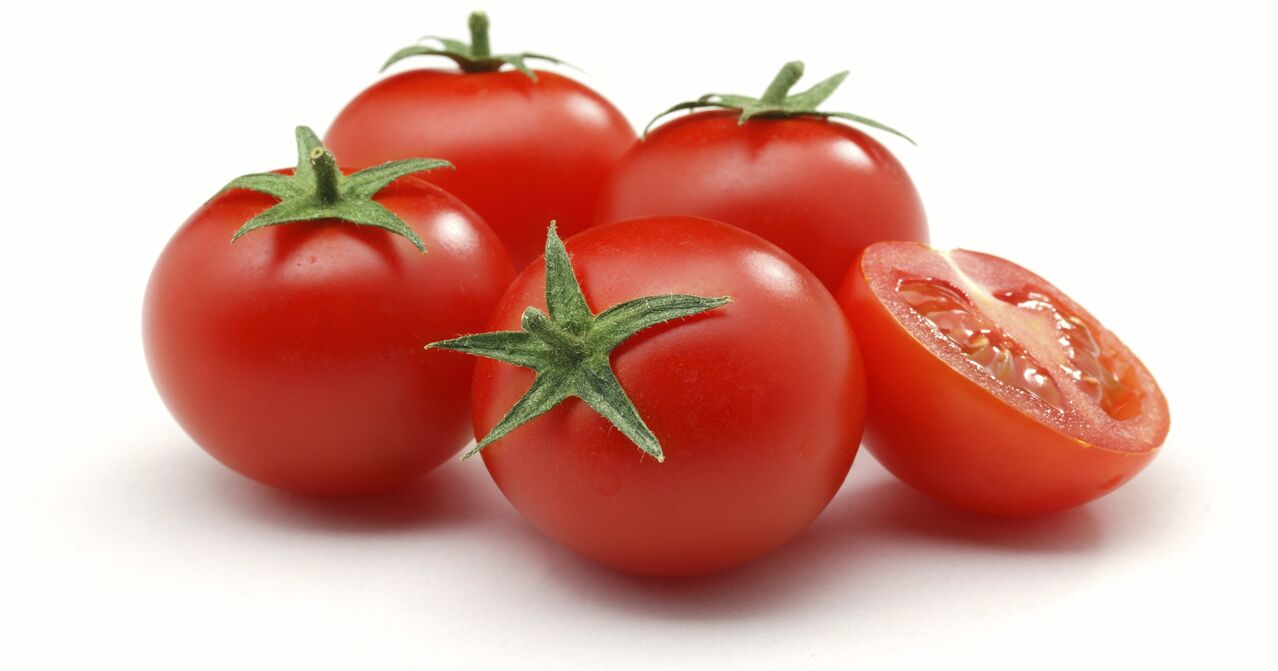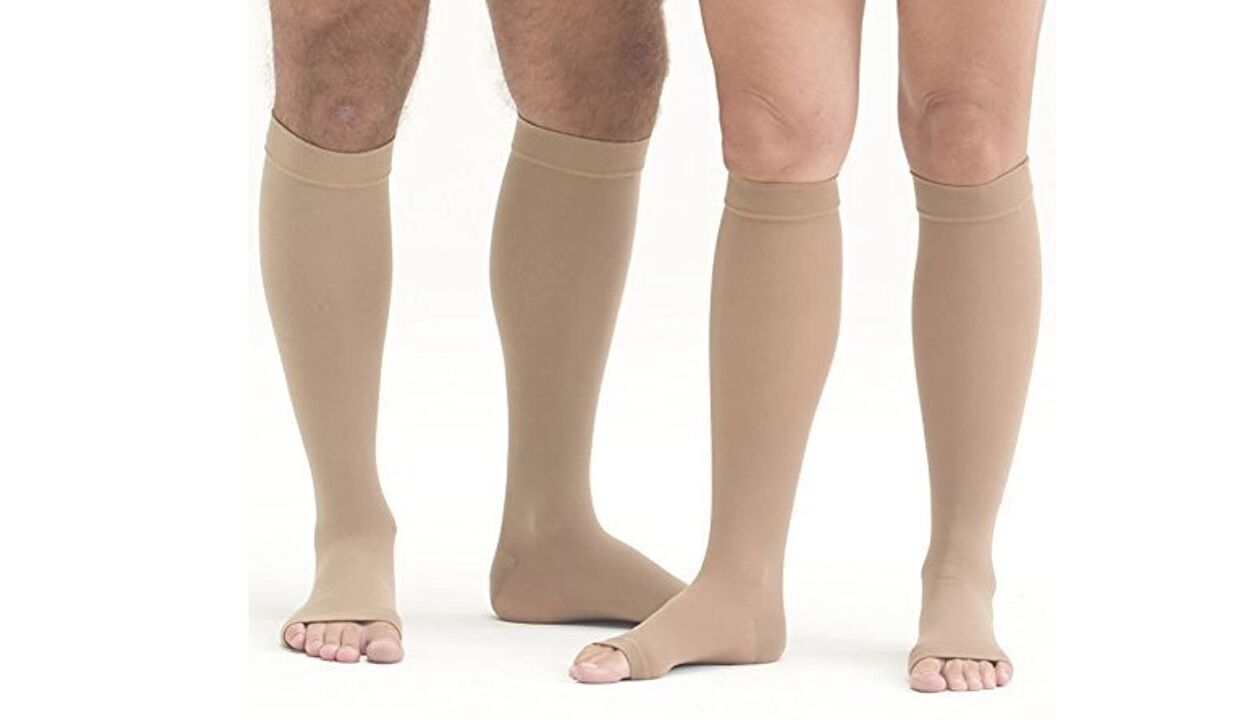According to statistics, one in four inhabitants of the planet, regardless of their age and physiological data, suffers from varicose veins. Varicose veins are a predominantly inherited disease, which can be caused by genetic factors. Any aspect of a disease such as varicose veins can be a trigger to trigger the mechanism, including poor diet, strenuous physical activity, or not having it altogether. The clinical picture of the disease and the choice of the method of treatment depends on the stage and form of varicose veins, as well as on the individual characteristics of the patient.

Pathogenesis and etiology
Currently, it has been proven and confirmed by scientific data that the main reason that predisposes to the appearance of the main symptoms of the disease is heredity. Genetic deficiencies, expressed in the transfer of genetic material responsible for the elasticity and tone of the venous walls, are passed on from generation to generation, causing the development of varicose veins.
In the presence of a hereditary predisposition, it is incredibly difficult to avoid the appearance of the main symptoms of the disease, since all the factors that almost every average person encounters on a daily basis can serve as reasons, as a kind of catalyst for the initiation of the disease. pathological processes. Among the most common reasons, the negative impact of which can provoke pathology, are called:
- Lack of physical activity.
- The period of pregnancy and subsequent childbirth.
- Excess weight, especially with the location of fatty masses in the lower body.
- Long-term use of hormonal and potent drugs.
- Irrational approach to food.
- Postural pathologies and sedentary lifestyle.
- Commitment to regular tanning beds.
- Bad habits.
- Wear tight, tight clothing.
Thus, varicose veins are above all a genetic anomaly. The above causes of varicose veins, the result of the systematic effect of which are various pathologies of the circulatory system, including varicose veins, are among the most common. However, in each individual situation, other reasons, among others, may play a negative role. It is almost impossible to completely eliminate all the predisposing factors.

Being overweight can cause varicose veins to appear.
Clinical picture
Symptoms of varicose veins, regardless of the reason, can vary widely depending on the stage and form of the disease, as well as other factors, such as lifestyle and anatomical features of the structure of the system. venous. Currently, there are six main stages of varicose veins, each characterized by a certain set of characteristic symptoms and causes of appearance.
First stage. At the initial stage of formation, varicose veins are characterized by the appearance of the following symptoms:
- Tingling.
- Heaviness and pain in the legs.
- Burning, itching.
- Nocturnal cramps.
You may also notice the visual symptoms of varicose veins in the form of bluish stars and veins. At this stage, the patient notices the appearance of edemas after physical exertion and in the evening.
Second step. According to scientific data, true varicose veins of the lower extremities, for whatever reasons, begin precisely from the second stage of the formation of the disease. This is due to the fact that the symptoms that appear in the first two stages of varicose veins can be attributed to other diseases of the vascular system. During this period, the patient feels discomfort, tingling and pain in the legs, even after short walks. In addition, the visual symptoms of the disease are clearly visible: the vascular network, swollen veins, the formation of dense bluish knots on the skin. In accordance with a similar picture, the third stage takes place with varicose veins.
In the fourth and fifth stages, with varicose veins, due to oxygen deprivation of tissues, trophic changes occur, expressed by the appearance of ulcerative areas. The skin of varicose veins takes on a dark shade, the veins become pronounced, dense to the touch.
The seventh stage is characterized as the most complex and advanced form of the disease. During this period, varicose veins of the lower extremities provoke the development of irreversible tissue changes, the appearance of non-healing trophic ulcers, which often become the causes of death of skin areas.

In the advanced stages of varicose veins, trophic ulcers appear.
Effective therapies
Modern medicine offers patients several basic treatments for varicose veins. Among them, there are two main areas: invasive and conservative treatment of varicose veins. Each of these directions, in turn, is divided into corresponding subgroups. For example, a conservative treatment option includes the use of external and internal drugs.
Invasive treatment of varicose veins is based on the use of radical therapeutic methods for inflamed areas of the vascular system. Depending on the stage and symptoms of the disease, different treatment options can be used: from the restoration of damaged vein walls to their total or partial removal. But the cardinal treatment of varicose veins provides for a number of contraindications, the presence of which excludes the use of any suitable procedures.
Effective treatment of varicose veins, aimed at achieving positive dynamics of the disease, is based on a complex combination of several types of therapy. Taking medication, for example, can be combined with certain types of physiotherapeutic treatment, wearing compression underwear, and folk methods.
In addition, when prescribing certain treatment options to the patient, the patient should also change their diet, engage in moderate physical activity, and minimize the factors that contribute to the progression of the disease as much as possible.
Medications
Medical treatment of varicose veins is used mainly in the early stages of the formation of the disease, regardless of its cause. In addition, it is possible to take and apply drugs to varicose veins as an additional measure in the course of invasive treatment. To treat the symptoms of varicose veins, drugs are used that have anti-inflammatory, regenerating, healing and normalizing venous outflow properties. If there is a risk of infection of the affected tissues, treatment with antibacterial drugs is necessary.
In most cases, drug therapy is used in the early stages of the disease.
With severe painful sensations, it is allowed to take pain relievers, the action of which is aimed at eliminating the symptoms, but not at treating the causes of the disease. It is also practiced the use of drugs that improve the composition of the blood, thin the hemalimph, increasing the resistance of the body.
The use of drugs makes it possible to reduce both the visual manifestations which characterize varicose veins of the lower limbs, and physiological: edema, pain, severity. However, the medical treatment of varicose veins is aimed at eliminating the symptoms and not the causes of the disease. It is almost impossible to get rid of varicose veins completely and regenerate damaged varicose veins in this way.
Physiotherapy
Physiotherapy is an excellent complement to a unique complex for the treatment of varicose veins. The only significant drawback of this type of therapy is the need to perform all procedures exclusively in medical institutions due to their specificity. The positive effect is only obtained if the treatment is taken regularly.
The following types of procedures have the maximum efficiency and convenience in the treatment of the disease:
- Electrophoresis.
- Laser radiation.
- Infrared radiation.
- Magnetotherapy.
But, despite all the advantages of physiotherapy prescribed for removing varicose veins on the legs, there are a number of contraindications, due to which their treatment is completely excluded. As a rule, these include symptoms of varicose veins such as trophic ulcers, necrotic tissue changes, open wound surfaces.

Physiotherapy can only be performed in a medical facility.
Surgical intervention
Surgical removal of affected veins with a proper procedure is classified as one of the most effective ways to treat varicose veins. But it is used only in the most severe and neglected cases, provided that there are no positive dynamics in the process of using invasive and conservative methods of treating the disease.
The surgical intervention is based on the complete removal of the affected vein. The procedure requires the introduction of anesthetics to a patient who is worried about varicose veins, hospitalization and a long period of rehabilitation. Depending on the causes of the disease and the indications, the operation for varicose veins can be carried out both in a planned way and in an emergency.
Invasive methods
A relatively new trend in the field of phlebology concerns invasive methods of treatment, the effectiveness of which is not inferior to surgical manipulations. At the same time, when carrying out such procedures, the patient does not need a long period of rehabilitation. In addition, there are no contraindications and side effects. However, invasive methods may not be effective enough for symptoms of advanced varicose veins.
These methods include: sclerotherapy and laser exposure. The first technique is used for the symptoms of varicose veins, both separately and as a component of a medical complex. During the sclerotherapy procedure, a substance is injected into the damaged vein which promotes rapid regeneration of cells and tissues. To get rid of varicose veins completely, it is enough to perform five to six of these procedures.
Laser therapy is somewhat similar to the surgical principle of therapeutic action, which allows you to permanently get rid of the symptoms of varicose veins. During the procedure, direct exposure to laser radiation occurs through the skin. The laser partially destroys the tissue of the damaged vein, causing it to contract immediately. The presence of scars or scars due to such a procedure is completely excluded.
Traditional methods
Of course, it will not work forever to get rid of varicose veins using traditional methods, but it is quite possible to reduce the visual and physiological manifestations of the disease somewhat. The main aspect of home therapy is regularity. It is possible to achieve good results and eliminate the unpleasant symptoms of varicose veins only if the procedures are carried out daily and in accordance with accepted standards.
As the most effective procedures for the causes and symptoms of varicose veins, which can be performed at home, compresses based on various drugs and herbs are called. The following recipes are particularly popular:
- The pulp of ripe tomatoes, crushed into pulp. An excellent remedy for varicose veins in the early stages of the disease. Apply to inflamed veins for two to three hours a day.
- Varicose veins of the lower extremities can be removed and bothersome symptoms can be reduced by using fresh aloe or Kalanchoe leaves. To do this, the plant should be crushed into a porridge and applied to the affected area overnight.
- Homemade yogurt. To prepare the compress, thoroughly moisten a cotton swab or bandage in a container with yogurt, and then apply it to the leg.
- Infusion of hop cones. Soak a gauze pad with a saturated infusion and secure it on the leg with a tight bandage. The procedure should be performed daily.
- White cabbage leaves. Its use is quite simple: scald the leaves with boiling water, cool and apply to the affected areas, then secure them with an elastic bandage. This method is ideal for severe pain and swelling.
- Sliced green tomatoes. Apply several slices of unripe tomatoes to the sore spot and secure them with a bandage. The duration of the procedure should not exceed five hours.
- Propolis. Preparations based on propolis can be used only after receiving a medical prescription, since the agent is classified as potent. It is possible to use tinctures and aqueous solutions of this beekeeping product in the form of therapeutic compresses and scrubs.

Compresses are the most effective way to treat illness at home.
Before using any home remedy for varicose veins, you need to make sure that there is no risk of developing an allergy to any of the components of the recipe. It is almost impossible to remove varicose veins on the legs using procedures performed at home. But the beneficial effect of the compresses described above allows to eliminate its causes and symptoms, to thin the blood and strengthen the venous walls, an important part of the therapeutic complex.
Adequate nutrition
Varicose veins often appear not only due to damage to the venous walls, but also due to thickening of the blood. In order to liquefy hemalymph, improve metabolic processes and restore blood microcirculation, the patient must make certain adjustments to his usual diet.
To begin with, you need to exclude from the menu all sweet, fatty and fried foods, as well as flour products. Low fat meat, vegetables, fruits, fermented dairy products, cereals should be present as the dominant products on the table of a patient with varicose veins of the legs. On the basis of these products, it is quite possible to build not only a healthy, but also a varied diet menu. In addition, such dishes help to thin the blood and eliminate the symptoms of the disease.
Tips & Tricks
As an additional measure for varicose veins, patients should also wear compression underwear, which evenly distributes the load on the legs, preventing the appearance of unpleasant symptoms and the progression of the disease. You can also replace the special underwear with ordinary elastic bandages, the effect of their use is no less noticeable. The only drawback of elastic bandages is the relative discomfort when attaching this device.

For the prevention and treatment of varicose veins, it is recommended to wear compression underwear.
Walking at a leisurely pace for short walks also helps normalize blood circulation and improve the supply of oxygen and nutrients to cells and tissues. But this method can be used as an additional component of the medical complex only if there are no contraindications. As an additional method of treating pathologies of the veins and blood vessels, a contrast shower can be called. Regular use of this procedure improves blood circulation, promotes restoration of skin cells, and also reduces swelling and pain. It should be remembered that for any damage to the vascular system you can only take a lukewarm, but not hot, shower.
It is almost impossible to cure varicose veins completely with treatment with just one technique. Only a complex combination of several means to combat the causes of varicose veins will allow you to forget about the unpleasant symptoms of this disease forever.
To avoid complications, you should not self-medicate. Before using any agent, even the most harmless, you should consult your doctor.












































